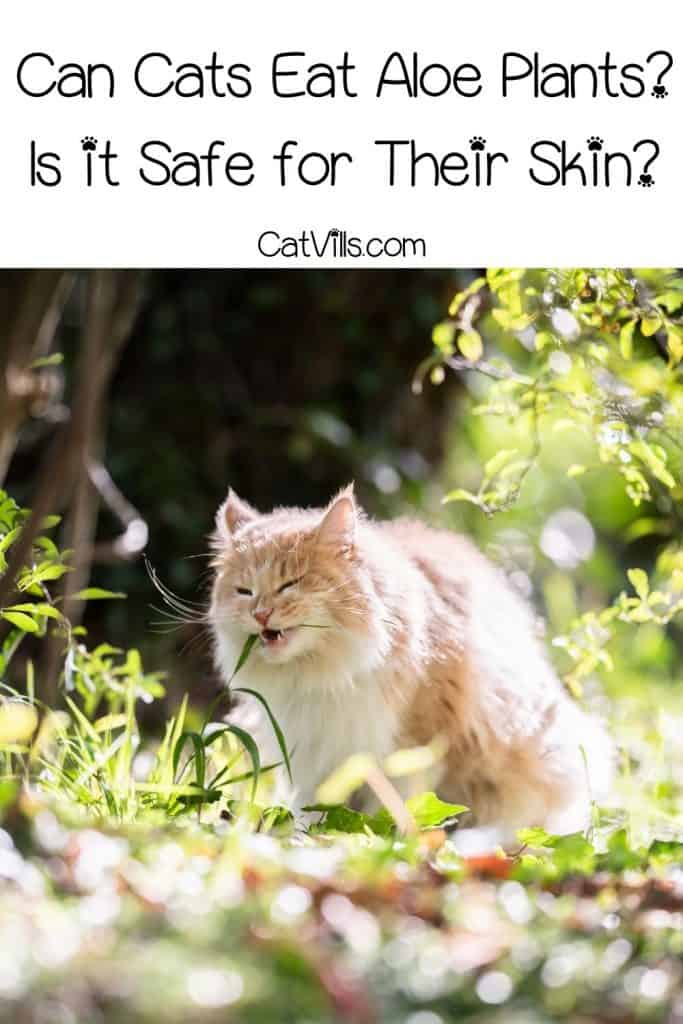Last Updated: 2 years ago
If you’ve wondered, “Can cats eat aloe plants?” stick around!
Below, I’ll be looking at all things aloe vera and answering the most common questions.
Will it help make your kitty the healthiest cat on the block, or could it be harmful to her?
Read on to find out!
Can Cats Eat Aloe Plants?

Let’s not beat around the bush; your cat should not be allowed to eat aloe plants, as the ASPCA reports that they are toxic to cats.
There are actually over 550 species of the aloe plant. In this article, we’ll be talking about the variant you’re most likely to know about.
Aloe vera, sometimes called true aloe, has been used for thousands of years for a variety of medicinal purposes.
The health experts over at Web MD have found studies supporting long-standing beliefs that aloe gel is effective in treating skin conditions like:
- Ance
- Dandruff
- Minor burns
- Skin abrasions
Aloe juice has strong laxative effects. In gel form, aloe vera can help reduce blood sugar levels and lower cholesterol.
Are Aloe Plants Safe for Cats?
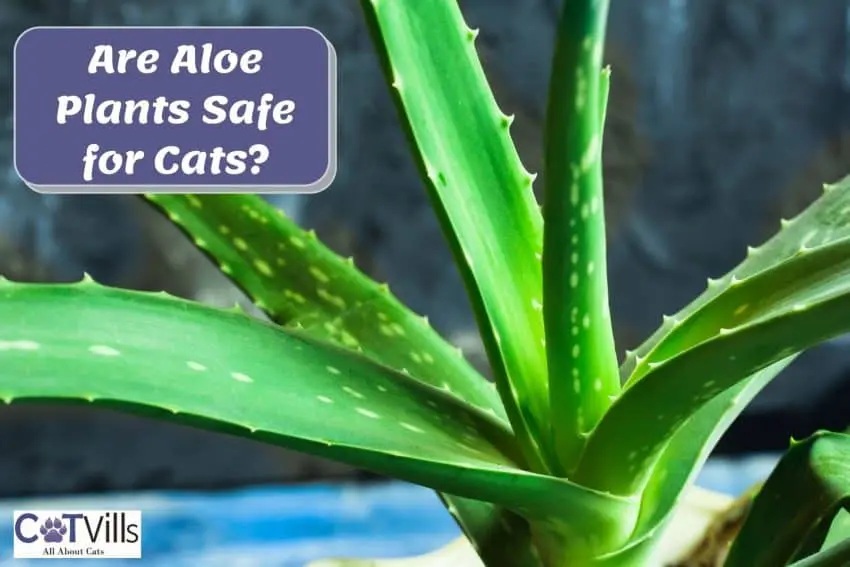
With aloe offering so many health benefits to humans, it’s only natural for cat owners to wonder if it would be a healthy cat treat for their furry friends.
As a responsible cat owner, you’ve decided to do your research first.
And it’s a good job you did. As you’ve already read above, aloe plants are toxic to cats.
What is it about aloe plants that makes them toxic To Cats?
The leaves of the aloe vera plant contain a natural substance called aloin. Aloin is part of the latex coating on the inside of the plant’s leaves.
It’s a white or yellow-colored sap with a bitter taste and extreme laxative properties, sometimes used to combat constipation in humans.
This is not only a problem for your cat; aloin can cause problems for you too!
What Happens If a Cat Eats Aloe Plants?
It’s not unusual to catch a cat eating something she shouldn’t. I’ve heard it all, from cats licking the floor to cats eating spider webs.
More often than not, it’s a harmless event. But from what you’ve already learned about cats eating aloe vera plants, you may be a little more concerned.
Thankfully, symptoms of true aloe poisoning are usually mild unless your cat manages to eat a lot of plant material.
It’s worth remembering that the toxic part of the aloe plant is the latex sap contained in the leaves.
Many aloe-based products available for purchase are made from gelatin plant matter. They should not contain the toxic aloin substance.
The effects of aloin ingestion are the same in humans and cats. In her study, Dr. Cathy Kapica of Chicago Medical School explains the problems.
Eating aloe causes a reduction in the colon’s ability to absorb liquid, resulting in more intestinal water. This would cause your cat’s poop to soften and result in her pooping more often.
Mild stomach upset, diarrhea, and electrolyte imbalances are possible with higher intakes of aloe.
Signs and Symptoms of Aloe Vera Poisoning in Cats
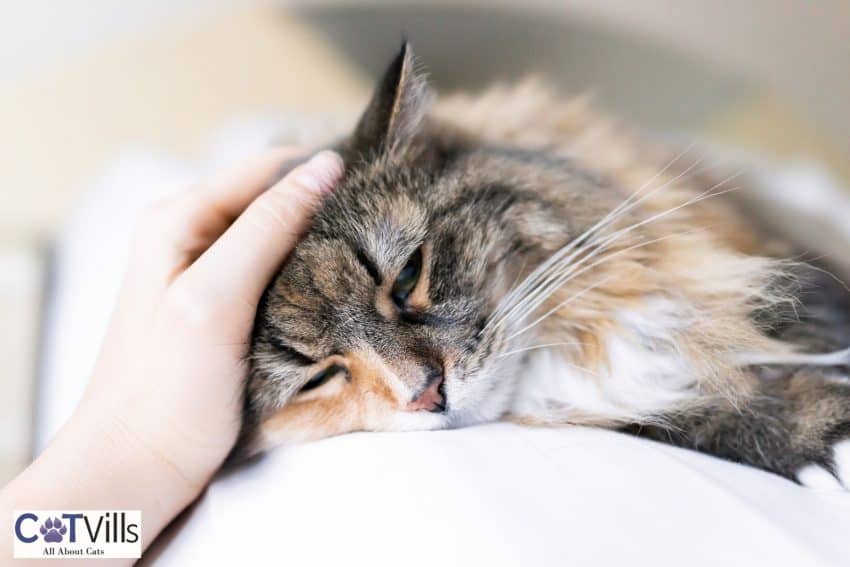
If you’ve found your Aloe vera plant has had some bites taken out of it, and kitty is the prime suspect, here are some signs she may be suffering from aloe poisoning.
- Vomiting
- Diarrhea
- Stomach cramps
- A reduced appetite
- Urine color change (Red-colored)
- Depression
- Lethargy
- Muscle Tremors
The severity of the symptoms will vary depending on how much aloe was eaten.
If you believe your cat has eaten aloe and she displays any of the symptoms listed above, get her to your vet. It’s better to be safe than sorry.
How to Keep Your Cat Safe From Eating Aloe
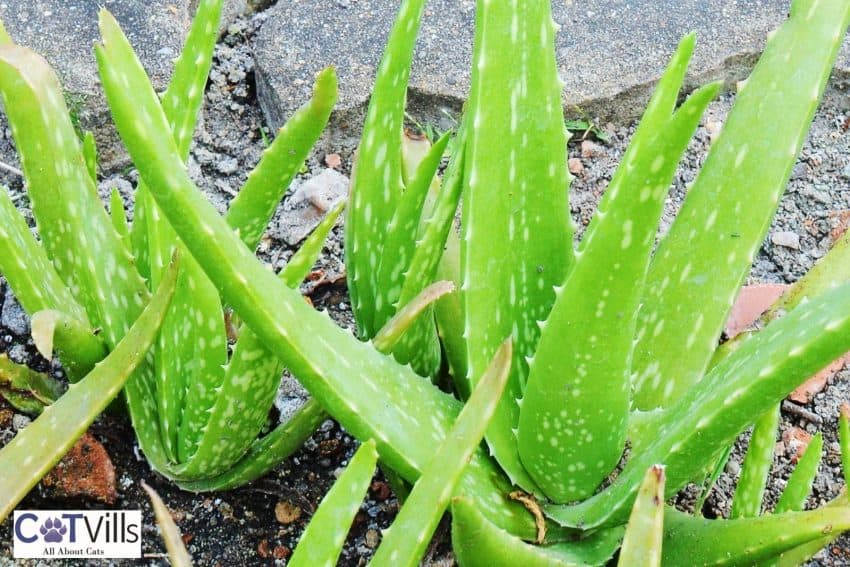
The best option is simply not to keep aloe plants in your house. Aloe-based products are fine, though, as they’re easy to store.
You simply have to have aloe vera in your home. Let’s explore some safety options.
1. Make it Less Attractive
There are some smells that cats really hate. This is something you can use to your advantage when it comes to discouraging your cat from any temptation to chew your aloe.
Citrus is one such smell; many cats really don’t like it. Leave orange and lemon peel around the base of your plant to keep your cat away.
Cayenne pepper and vinegar can be used to a similar effect.
2. Surround it With Plants Your Cat Dislikes
Continuing with smells, some plants also produce smells that cats don’t like.
Rosemary is one such example that comes with the added benefit that you will have homegrown herbs you can use in your cooking!
Lavender is another plant that smells great to us but not so good to your cat. It doesn’t look too shabby either.
Another planted-based tactic is to surround your aloe with spiky or thorny plants such as cacti or roses.
Your cat doesn’t appreciate getting pricked any more than you do and will avoid the area.
#3 Removal
No, I don’t mean get rid of your cat! Or your aloe, for that matter. I mean, remove the opportunity for the two to meet.
Consider placing your aloe plant in a greenhouse, or, if you have space, give your plants their very own room in your home.
Perhaps there is somewhere up high that your cat can’t reach where your aloe will be happy. I say this, but I haven’t found a spot my cats can’t get to yet.
Or anything else you can do to keep your cat from gaining unrestricted, unsupervised access to your aloe plant.
Is Aloe Vera Safe for Your Cat’s Skin?
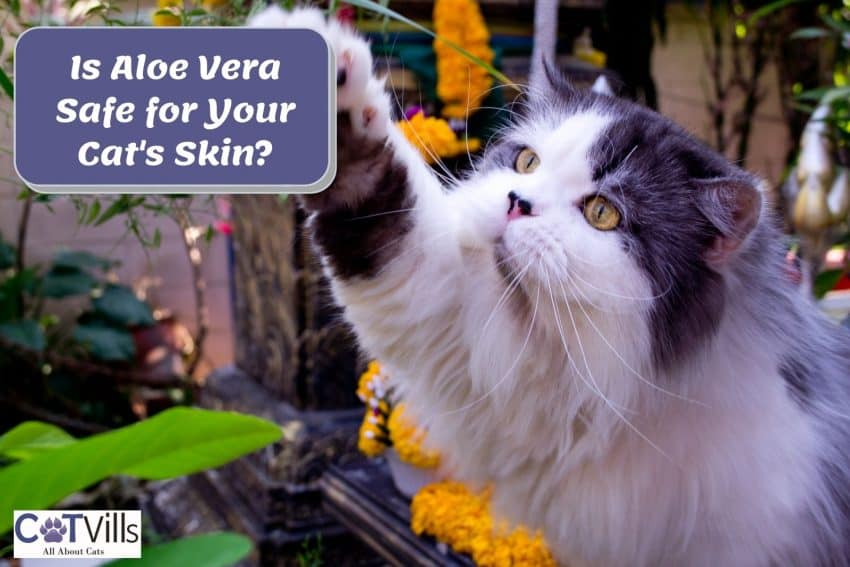
When it comes to skin treatments, there are plenty of aloe-based care products available.
The aloe gel extract is safe for your cat, and she will be fine if she consumes some of it through grooming.
While these should only contain the gel part of the aloe, there is still a chance some of the toxic leaf sap may have found its way into the product.
As a result, some cats can have allergic reactions to aloe gel applied to their skin. That said, aloe gel is helpful in treating a variety of situations, such as:
- Soothing and repairing general skin irritation
- Healing minor wounds and bites
- Cooling burns
- Calming inflammation
Always consult your vet when it comes to your cat’s health and the treatment of any conditions. They may even prescribe aloe vera.
Which Other Plants Are Harmful to Cats?
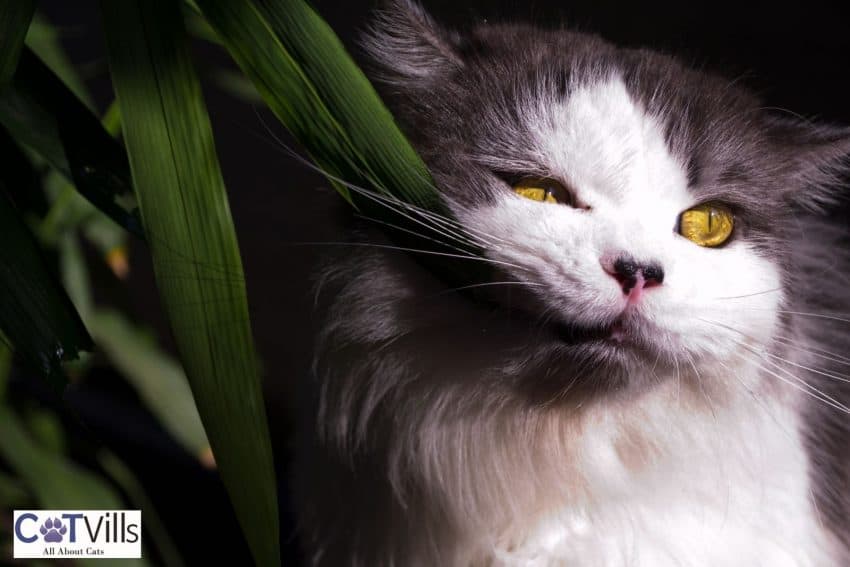
Aloe is by no means the most dangerous plant your cat could eat. There are plenty of common houseplants out there that are higher in toxicity and present more of a risk.
Here is a selection of common plants that the ASPCA has identified as being especially poisonous to pets in general.
- Lilies: Plants in this family are highly toxic to cats. Eating just a tiny amount of this plant can result in severe kidney damage or kidney failure.
- Marijuana: In many places, you would be in trouble just for having this in your house. If your cat eats any, it could result in vomiting, diarrhea, seizures, and a coma.
- Tulip and Narcissus Bulbs: The bulb part of these plants contains compounds that can cause complications ranging from drooling and loss of appetite all the way to convulsions and heart problems.
- Rhododendrons: This toxic plant contains toxins that can cause vomiting, diarrhea, coma, and ultimately death from collapse of heart function.
- Castor Beans: These contain ricin, a highly toxic substance. It can cause vomiting, diarrhea, and, in more extreme cases, seizures, coma, and death.
- Yew: These contain a toxin known as taxine. This can affect the nervous system, causing trembling and breathing difficulties. It can also cause heart failure and death.
- Amaryllis: These popular Easter plants contain toxins that can cause a variety of problems. These include vomiting, diarrhea, anorexia, and muscle tremors.
- English Ivy: Known by many other names, these plants contain substances that can cause cats to suffer from vomiting, diarrhea, and stomach pain.
FAQs
Are cats attracted to aloe plants?
Different cats like different things; there’s no one size fits all answer. So, cats are not attracted to aloe plants over any other plant in particular. Instead, it’s down to each individual cat’s preference.
Can aloe kill a cat?
Aloe is moderately toxic to cats and is most likely to result in diarrhea. As with anything taken to the extreme, this could result in death. However, a cat would have to eat a lot of aloe and receive no supportive care.
Can cats lick aloe vera?
Cats can lick aloe vera relatively safely. The toxic part of an aloe vera plant is the sap contained within the leaves. Consuming this substance is likely to cause diarrhea and other digestive problems.
Can you give your cat aloe vera juice?
The toxic part of the aloe vera plant is the latex sap contained in the leaves. Products that are not made from this part of the plant are safe for your cat to consume, in theory.
Final Word
You asked, “Can cats eat aloe plants?” You learned that aloe gel is safe for your cat and that it may help with cat skin problems in some circumstances.
However, you found out that the plant leaves contain latex sap, which is moderately toxic to cats.
This can cause your cat to suffer from diarrhea, leading to a loss of electrolytes and dehydration.
We looked at the symptoms of true aloe poisoning and reviewed other common toxic houseplants.
As always, the best approach is to seek veterinary treatment if you are worried about your feline friend’s health.
Can cats eat aloe plants? What are your thoughts on the information above? Tell me in the comments below!
Resources:
